
FACULTY OF ARTS AND SCIENCES
Department of Physics
GEIN 316 | Course Introduction and Application Information
| Course Name |
Innovative Design Strategies
|
|
Code
|
Semester
|
Theory
(hour/week) |
Application/Lab
(hour/week) |
Local Credits
|
ECTS
|
|
GEIN 316
|
Fall/Spring
|
2
|
2
|
3
|
4
|
| Prerequisites |
None
|
|||||
| Course Language |
English
|
|||||
| Course Type |
Service Course
|
|||||
| Course Level |
First Cycle
|
|||||
| Mode of Delivery | - | |||||
| Teaching Methods and Techniques of the Course | DiscussionGroup WorkProblem SolvingCase StudyLecture / Presentation | |||||
| Course Coordinator | ||||||
| Course Lecturer(s) | ||||||
| Assistant(s) | - | |||||
| Course Objectives | This course aims to expose students to design processes and methods for innovative new product development. Students will engage in strategic thinking and research into, for example, the political, economic, social and technological contexts of new products, services or systems. As the outcome of the course, students will propose product concepts and product specifications that are intended for further development. |
| Learning Outcomes |
The students who succeeded in this course;
|
| Course Description | This course will consist of design problems concentrating particularly on the early phases of new product development. Students will work individually or in groups and proceed in stages along a new product development process. They will employ a number of tasks including planning, creative thinking, desk and field research, product concept design, design concept development, preparing and making presentations, and composing business proposals. At the end of the course, students will produce an innovative product concept. |
|
|
Core Courses | |
| Major Area Courses | ||
| Supportive Courses | ||
| Media and Management Skills Courses | ||
| Transferable Skill Courses |
WEEKLY SUBJECTS AND RELATED PREPARATION STUDIES
| Week | Subjects | Related Preparation |
| 1 | INTRODUCTION - Course Introduction and Overview - “Design Ladder” | Syllabus |
| 2 | THE CREATIVE ECONOMY AND DESIGN THINKING - Creative Economy and Today - Introduction to Design Thinking - On Human Creativity - General Principles of Service Design | Reading: Tim Brown (2008). Design thinking. Harvard Business Review, 86(6), 84-92. |
| 3 | THE CREATIVE ECONOMY AND DESIGN THINKING - Creative Economy and Today - Introduction to Design Thinking - On Human Creativity - General Principles of Service Design | Homework: Video & Essay on ‘What we’ve learnt’ |
| 4 | DESIGN STRATEGIES: Design Strategies Case Studies - What is Strategy? - What is Strategic design? | Reading: Rohan Doherty, Cara Wrigley, Judy Matthews, and Sam Bucolo (2014). Climbing the design ladder: Step by step. In Proceedings of the 19th DMI Academic Design Management Conference, London, pp. 2578-2600. & Homework submission |
| 5 | DESIGN STRATEGIES: Strategic Design Practice - How to Translate Strategy to Design - Changing Roles of Designers - Discussions: Success Stories on Service Design Strategies | Reading: Rohan Doherty, Cara Wrigley, Judy Matthews, and Sam Bucolo (2014). Climbing the design ladder: Step by step. In Proceedings of the 19th DMI Academic Design Management Conference, London, pp. 2578-2600. PRESENTATION 1 Brief |
| 6 | DESIGN STRATEGIES Presentation: Success Stories on Service Design Strategies | SUBMISSION REQUIREMENTS & PRESENTATION |
| 7 | DESIGN STRATEGIES Presentation: Success Stories on Service Design Strategies (cont.) | PRESENTATION |
| 8 | DESIGN STRATEGIES Presentation: Success Stories on Service Design Strategies (cont.) | PRESENTATION |
| 9 | LIVE OR DIE: INNOVATIVE IDEA FAILURES - Idea Failures Case Studies - Distribution of Presentation 2 Subjects and Student Groups: Creative/Innovative Communications - “Brand Positioning” Analysis Example (Video Screening) | Reading: Michael B. Beverland and Francis J. Farrelly (2010). What does it mean to be design-led? Design Management Review, 18(4), 10-17. |
| 10 | Discussions: Designing Creative & Innovative Communications for Global Issues | PROJECT Brief |
| 11 | CREATIVE EXPERIENCES: Designing Creative & Innovative Communications for Global Issues - In-class Study: System Map & User Journey Map | Ecosystem Map & User Journey Map |
| 12 | DESIGN STRATEGIES Project: Designing Creative & Innovative Communications for Global Issues | SUBMISSION REQUIREMENTS & PROJECT |
| 13 | DESIGN STRATEGIES Project: Designing Creative & Innovative Communications for Global Issues (cont.) | PROJECT |
| 14 | DESIGN STRATEGIES Project: Designing Creative & Innovative Communications for Global Issues (cont.) | PROJECT |
| 15 | Review of the Semester | None |
| 16 | Review of the Semester | None |
| Course Notes/Textbooks | - |
| Suggested Readings/Materials | Bruce, Margaret and J R Bessant. 2002. Design in Business : Strategic Innovation Through Design. Harlow, England ; London ; New York: Financial Times/Prentice Hall.Keinonen, Turkka and Roope Takala. 2006. Product Concept Design : A Review of the Conceptual Design of Products in Industry. New York]: Springer.Kelley, Tom and Jonathan Littman. 2001. The Art of Innovation : Lessons in Creativity From IDEO, America's Leading Design Firm. New York: Currency/Doubleday.Riley, Patrick G. 2002. The OnePage Proposal : How to Get Your Business Pitch Onto One Persuasive Page. New York: ReganBooks.Schifferstein, H and Paul, Hekkert. 2008. Product Experience. San Diego, CA: Elsevier.Snyder, Carolyn. 2003. Paper Prototyping: The Fast and Easy Way to Design and Refine User Interfaces. San Francisco: Morgan Kaufmann Publishers.Squires, Susan and Bryan Byrne. 2002. Creating Breakthrough Ideas : The Collaboration of Anthropologists and Designers in the Product Development Industry. Westport, CT: Bergin & Garvey.Stanton, Neville. 2005. Handbook of Human Factors and Ergonomics Methods. Boca Raton: CRC Press.Suri, Jane Fulton and Matthew Marsh. 2000. “Scenario Building as an Ergonomics Method in Consumer Product Design.” Applied Ergonomics, vol. 31:151157. Elsevier Science Ltd.Van der Heijden, Kees. 2005. Scenarios : The Art of Strategic Conversation. Chichester, West Sussex ; Hoboken, N.J.: John Wiley & Sons. |
EVALUATION SYSTEM
| Semester Activities | Number | Weigthing |
| Participation |
1
|
10
|
| Laboratory / Application | ||
| Field Work | ||
| Quizzes / Studio Critiques | ||
| Portfolio | ||
| Homework / Assignments |
1
|
20
|
| Presentation / Jury |
1
|
40
|
| Project |
1
|
30
|
| Seminar / Workshop | ||
| Oral Exams | ||
| Midterm | ||
| Final Exam | ||
| Total |
| Weighting of Semester Activities on the Final Grade |
4
|
100
|
| Weighting of End-of-Semester Activities on the Final Grade | ||
| Total |
ECTS / WORKLOAD TABLE
| Semester Activities | Number | Duration (Hours) | Workload |
|---|---|---|---|
| Theoretical Course Hours (Including exam week: 16 x total hours) |
16
|
2
|
32
|
| Laboratory / Application Hours (Including exam week: '.16.' x total hours) |
16
|
2
|
32
|
| Study Hours Out of Class |
0
|
||
| Field Work |
0
|
||
| Quizzes / Studio Critiques |
0
|
||
| Portfolio |
0
|
||
| Homework / Assignments |
1
|
6
|
6
|
| Presentation / Jury |
1
|
20
|
20
|
| Project |
1
|
20
|
20
|
| Seminar / Workshop |
0
|
||
| Oral Exam |
0
|
||
| Midterms |
0
|
||
| Final Exam |
0
|
||
| Total |
110
|
COURSE LEARNING OUTCOMES AND PROGRAM QUALIFICATIONS RELATIONSHIP
|
#
|
Program Competencies/Outcomes |
* Contribution Level
|
||||
|
1
|
2
|
3
|
4
|
5
|
||
| 1 | To be able master and use fundamental phenomenological and applied physical laws and applications, |
|||||
| 2 | To be able to identify the problems, analyze them and produce solutions based on scientific method, |
|||||
| 3 | To be able to collect necessary knowledge, able to model and self-improve in almost any area where physics is applicable and able to criticize and reestablish his/her developed models and solutions, |
|||||
| 4 | To be able to communicate his/her theoretical and technical knowledge both in detail to the experts and in a simple and understandable manner to the non-experts comfortably, |
|||||
| 5 | To be familiar with software used in area of physics extensively and able to actively use at least one of the advanced level programs in European Computer Usage License, |
|||||
| 6 | To be able to develop and apply projects in accordance with sensitivities of society and behave according to societies, scientific and ethical values in every stage of the project that he/she is part in, |
|||||
| 7 | To be able to evaluate every all stages effectively bestowed with universal knowledge and consciousness and has the necessary consciousness in the subject of quality governance, |
|||||
| 8 | To be able to master abstract ideas, to be able to connect with concreate events and carry out solutions, devising experiments and collecting data, to be able to analyze and comment the results, |
|||||
| 9 | To be able to refresh his/her gained knowledge and capabilities lifelong, have the consciousness to learn in his/her whole life, |
|||||
| 10 | To be able to conduct a study both solo and in a group, to be effective actively in every all stages of independent study, join in decision making stage, able to plan and conduct using time effectively. |
|||||
| 11 | To be able to collect data in the areas of Physics and communicate with colleagues in a foreign language ("European Language Portfolio Global Scale", Level B1). |
|||||
| 12 | To be able to speak a second foreign at a medium level of fluency efficiently |
|||||
| 13 | To be able to relate the knowledge accumulated throughout the human history to their field of expertise. |
|||||
*1 Lowest, 2 Low, 3 Average, 4 High, 5 Highest
NEWS |ALL NEWS

The Physics Department Erasmus Agreement
Dear Students of the Physics Department at Izmir University of Economics, Our university has signed an Erasmus agreement with University Paul Sabatier Toulouse
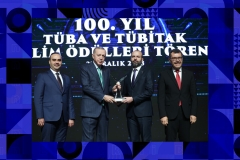
Four major awards in 5 years
Prof. Dr. Göktuğ Karpat, Faculty Member at Department of Physics, Faculty of Arts and Science, Izmir University of Economics (IUE) has been
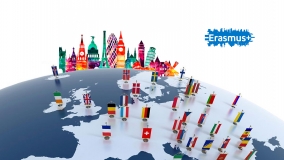
The Physics Department Erasmus Agreement
Dear Students of the Physics Department at Izmir University of Economics, We are pleased to share with you an exciting announcement! Our university

Loved physics, gave up her childhood dream
Senem Özdemir, who has been dreaming of becoming a pilot since childhood, graduated as the top student in the Department of Physics
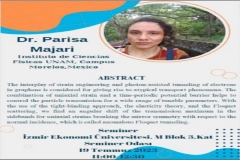
Scientific visit to the Department of Physics
Dr. Parisa Majari came to visit our Physics Department. Dr. Majari who studied with Prof. Dr. Gürsoy Bozkurt Akgüç gave a seminar
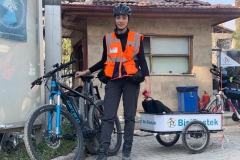
Ambassador of 'goodness'
Berfin Kolcu, a student of Izmir University of Economics (IUE) Department of Physics, went to Hatay, where thousands of people were under
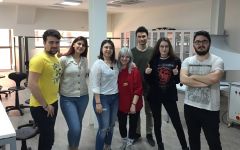
our student physics project at the finals
NEBULA rocket team, a branch of physics club established by our students is now at the finals after succesfully passing critical design


